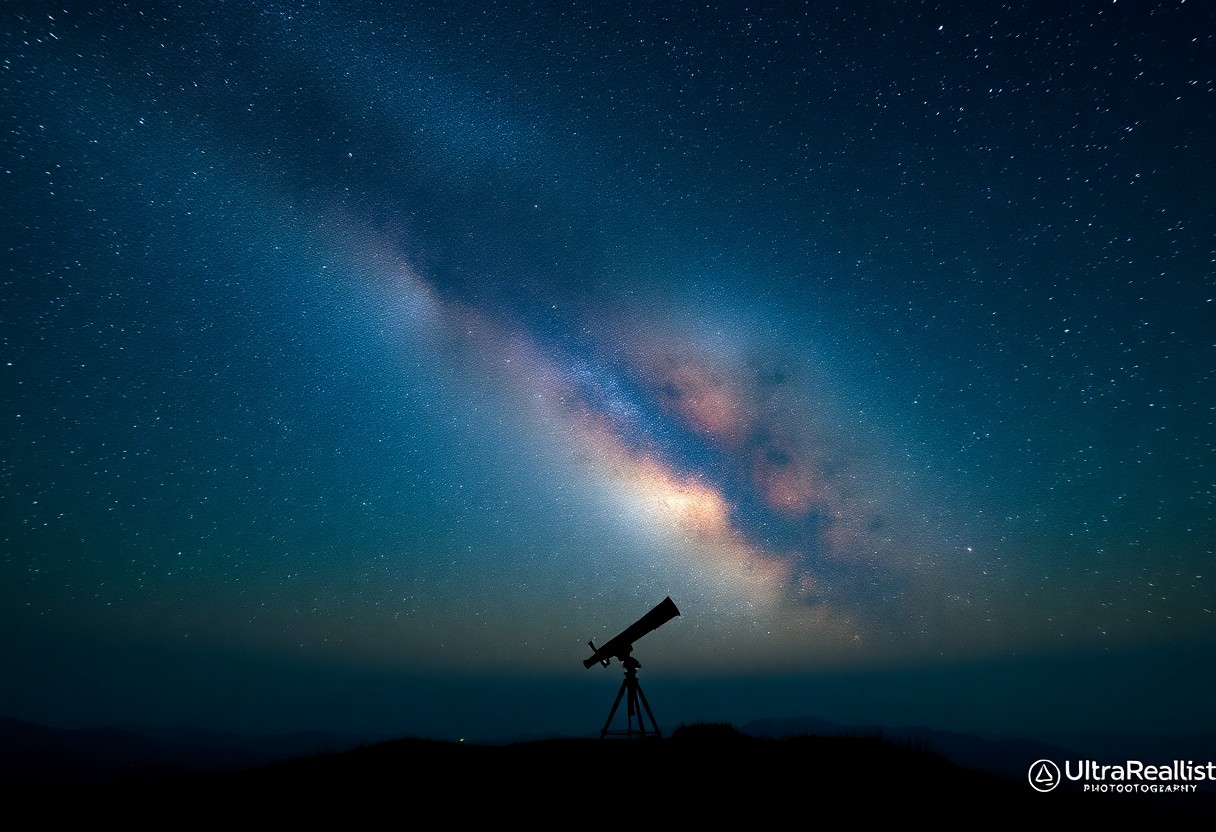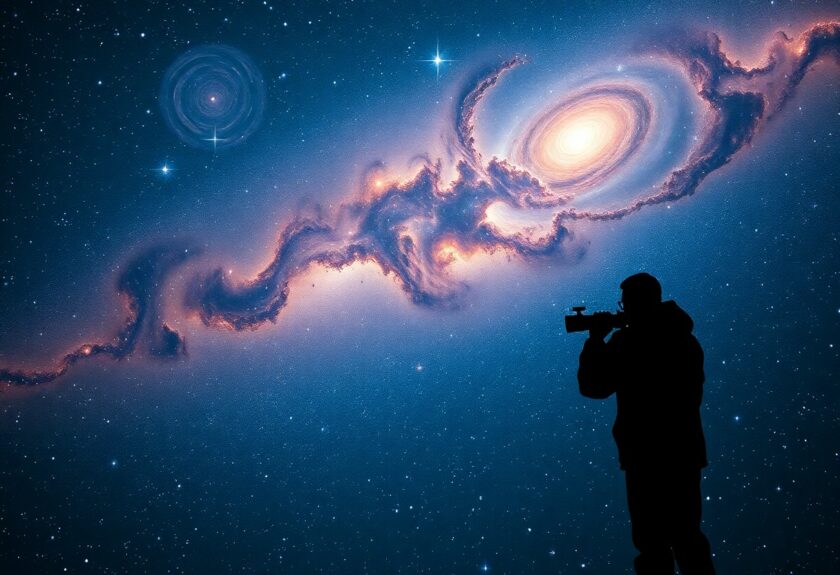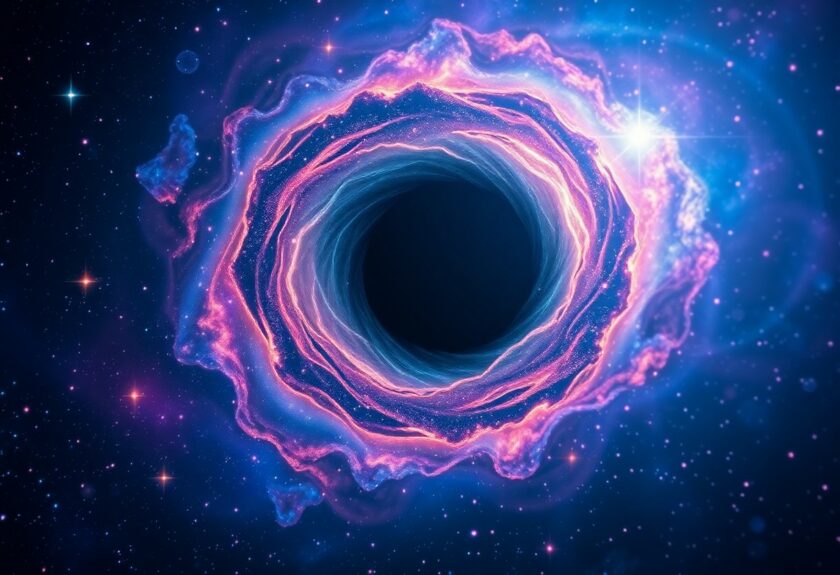Over the centuries, stars have captivated your imagination as you gaze up into the night sky. But have you ever wondered why you see them shimmering from such vast distances? In this friendly guide, you’ll discover the fascinating science behind star visibility, from light travel to the wonders of our atmosphere. Join us as we explore the universe and unravel the mysteries that twinkle above you.

What Are Stars?
Before delving into the wonders of the universe, it’s imperative to understand what stars actually are. Stars are colossal celestial bodies composed primarily of hydrogen and helium, undergoing nuclear fusion in their cores. This process releases immense energy, causing them to emit light and heat. In your night sky, these luminous spheres come in various sizes, temperatures, and colours, contributing to the breathtaking tapestry of the cosmos.
The Birth of Stars
Stars form within massive clouds of dust and gas, known as nebulae. Over time, gravity pulls the materials together, leading to an increase in temperature and pressure until nuclear fusion ignites, birth a new star. This transformation can take millions of years, but the result is a brilliant beacon that lights up the universe, much like a cosmic nursery.
Different Types of Stars
Across the universe, stars come in a variety of types, each with distinct characteristics that influence their life cycles and roles in the cosmos. Here’s a quick overview:
| Type of Star | Description |
| Red Dwarfs | Small, cool stars that are long-lived. |
| Main Sequence | Stars like our Sun that are in their stable phase. |
| Giants | Large stars that have expanded and cooled. |
| Supergiants | Massive stars that shine very brightly for a short period. |
| Neutron Stars | Remnants of supernova explosions, extremely dense. |
Knowing the types of stars can deepen your appreciation of the universe. Each type plays a significant role in the life cycle of galaxies, influencing everything from star formation to the chemical enrichment of space.
More on Different Types of Stars
For instance, different stellar classes are categorised based on their temperature, luminosity, and size, creating a fascinating spectrum of celestial points. Some are destined to explode as supernovae, scattering elements across the cosmos, while others will quietly fade away over billions of years. Here’s a bit more detail:
| Star Class | Characteristics |
| O-Type | Hot, blue stars with short lifespans. |
| B-Type | Bright and blue, slightly longer-lived than O-types. |
| A-Type | White stars, medium-sized with strong hydrogen lines. |
| F-Type | Yellow-white stars, like those found in our solar system. |
| K and M Types | Cool, red stars, with M-types being the most populous. |
Knowing the diversity of star types allows you to imagine the myriad of processes at play within the universe, each contributing to the grand cosmic story.
How Do We See Stars?
Any time you gaze up at the night sky, you’re witnessing the beautiful dance of light from distant stars. This light travels vast distances through space before entering your eyes, allowing you to appreciate their twinkling beauty. By understanding the science of light and the conditions in our atmosphere, you’ll gain a deeper appreciation for the stars that seem to sprinkle the sky.
The Science of Light
Behind the enchanting sights of the night sky lies the fascinating science of light. When stars emit energy, it travels as light waves and takes millions of years to reach Earth. Once this light enters your eye, it is interpreted by your brain, transforming distant cosmic beauty into a stunning visual experience.
Atmosphere and Observation
On your journey to observe stars, the Earth’s atmosphere plays a significant role. As light from stars passes through layers of air, it can bend or scatter, which can affect their appearance. This is why you might see stars twinkle or appear to change colours, adding to the magical experience of stargazing.
To enhance your stargazing experience, consider where and when you choose to observe the night sky. Light pollution, which is often prevalent in urban areas, can obscure your view of fainter stars. Finding a peaceful location away from artificial lights will greatly improve your chance of seeing a clearer, more stunning display of stars. The atmosphere can also vary depending on weather conditions, so clear nights with minimal clouds will offer the best visibility for your stargazing adventures.

The Distance to Stars
Assuming you’ve gazed up at the night sky, you might have wondered just how far away those dazzling stars really are. The distances to stars can be mind-boggling, stretching light years away. This enormity can make it a bit challenging to comprehend our place in the universe and the vastness of space surrounding us.
Light Years Explained
With light years, you’re dealing with a measure of distance travelled by light in one year, approximately 9.46 trillion kilometres. It’s a handy way to express the vast separations between celestial bodies, helping you understand just how far away your favourite stars are from Earth.
Why Distance Matters
Distance plays a significant role in how you perceive and understand stars. The farther away a star is, the dimmer it appears to you. This affects not only your viewing experience but also scientists’ ability to study the stars, as light takes time to reach us, meaning you’re always looking back in time at these distant suns.
Stars emit light that travels across the universe before reaching your eyes. This journey can mean that what you see tonight might represent a star as it looked years or even centuries ago! Understanding this distance can deepen your appreciation for the cosmos and the intricate dance of celestial relationships, as each star reveals a unique story from the past.
The Mystery of Stars
Keep gazing up at the night sky, and you’ll find yourself surrounded by a canvas filled with shimmering stars. These celestial bodies have intrigued humankind for ages, representing both the vastness of the universe and the wonders of creation. The mystery of stars invites you to explore their origins, evolution, and the secrets they hold, sparking your imagination and curiosity about what lies beyond our earthly realm.
Stars in Myth and Culture
Culture has long intertwined itself with the stars, weaving tales and legends that reflect human experiences and values. From ancient civilisations who looked to the heavens for guidance, astrology, and storytelling, to modern interpretations of stars as guides in your own life, these celestial beings hold a special place in societies around the world. By appreciating their cultural significance, you can connect deeper with your own heritage and the shared stories of humanity.
The Human Fascination with Stars
Along with captivating stories, stars have inspired your sense of wonder and exploration. Their beauty and mystery can ignite a longing for adventure, urging you to ponder the possibilities of what lies beyond your earthly existence. Stars spark imagination, invoking dreams of travel to distant galaxies and making you curious about the universe’s vastness, urging you to seek knowledge about the world around you.
It’s no surprise that throughout history, stars have captured your human imagination. Night after night, the twinkling lights prompt you to ponder your place in the universe and your relationship with the cosmos. This fascination can lead to a deeper understanding of science, philosophy, and even art, allowing you to explore your thoughts and feelings in ways that will ultimately enrich your life. Each star you see represents not just a distant sun, but a gateway to endless possibilities, inspiring you to keep looking upwards in awe.
Tools for Stargazing
Many enthusiasts find joy in exploring the night sky, and having the right tools can enhance your stargazing experience. From basic equipment to advanced technology, you can unlock the mysteries of the universe with various tools tailored to your level of interest. Whether you’re a casual observer or a dedicated astronomer, these resources will help you appreciate the beauty of stars, planets, and constellations more fully.
Telescopes and Binoculars
Any stargazer can benefit from using telescopes or binoculars to get a closer look at celestial objects. Telescopes, available in various types and sizes, allow for detailed observations of planets, moons, and distant galaxies, while binoculars offer a more portable and user-friendly option for beginners. With either tool, you’re sure to deepen your fascination with the cosmos.
Apps and Technology for Star Lovers
After all, in today’s digital age, stargazing has become even more accessible thanks to innovative apps and technologies. These resources can help you identify constellations, track celestial events, and provide valuable information at your fingertips.
Lovers of the night sky will find various apps that use augmented reality to superimpose constellations over the actual sky, making it easier to locate stars and planets. You can also explore interactive maps and guides that let you customise your stargazing experience, ensuring that you never miss out on an astronomical event. By harnessing technology, you can stay connected with the universe while enjoying its wonders from your own backyard.
Fun Facts About Stars
Not only are stars dazzling celestial objects, but they also have heaps of intriguing characteristics! For instance, did you know that most of the stars you see at night are actually much larger than our own Sun? And while each star appears to twinkle, this twinkling is just an illusion created by Earth’s atmosphere. There are more stars in the universe than there are grains of sand on all the beaches of Earth! So, next time you gaze at the night sky, appreciate the wonders that lie beyond.
Record-Breaking Stars
On the topic of remarkable stars, some truly stand out. For instance, UY Scuti is one of the largest known stars, with a radius over 1,700 times that of our Sun! Conversely, the smallest star, EBLM J0555-57Ab, is just slightly larger than Saturn. These extreme examples show just how diverse the stellar population can be, each uniquely beautiful in its own right.
The Most Famous Stars
Above the rest, there are some stars that have captured your imagination and set a global spotlight on their brilliance. From the iconic North Star, Polaris, which has guided travellers for centuries, to the breathtaking beauty of Sirius, the brightest star in the night sky, these celestial bodies have a remarkable way of evoking feelings of wonder and exploration.
Famous stars often have captivating stories behind them. Polaris has been a constant beacon in the night sky, helping navigators find their way for centuries, while Sirius, known as the Dog Star, has been revered in various cultures and is part of the constellation Canis Major. These stars not only shine brightly but also serve intriguing purposes, inspiring countless tales and myths as they light up your nights.
Final Words
Drawing together the wonders of the universe, understanding why you see stars enhances your appreciation of the night sky. As you gaze upwards, let the stories of light, distance, and time spark your imagination. Each twinkle represents a glimpse into the vastness of space, reminding you of the beauty and complexity of the cosmos. So, the next time you find yourself under a starlit sky, take a moment to revel in the astonishing journey of light that connects you to the universe.



